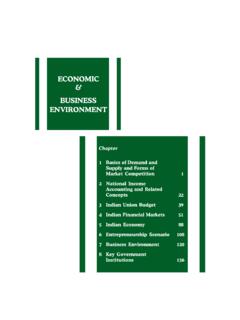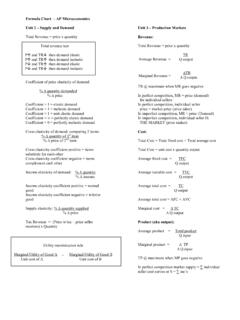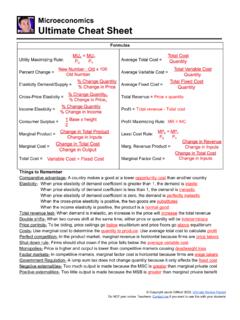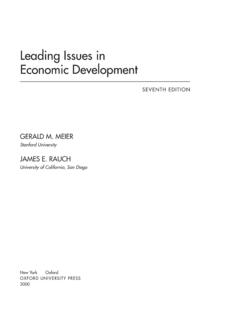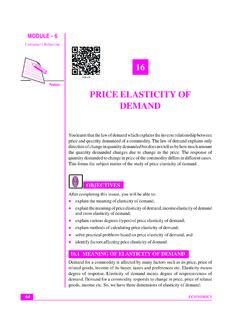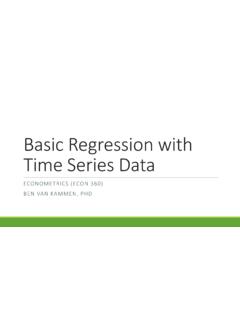Transcription of ECONOMIC AND SOCIAL CONSEQUENCES OF DRUG ABUSE …
1 Number 6 ECONOMIC AND SOCIAL CONSEQUENCES OF DRUG ABUSE AND ILLICIT TRAFFICKINGNOTER eferences to dollars ($) are to United States dollars, unless otherwise publication has not been formally of the illicit drug Distribution and illicit ECONOMIC CONSEQUENCES of drug ABUSE and Apparent "benefits" and costs of drug ABUSE and Benefits ..122. Work, employment and Influence of drugs on employment status and Generation of Prices and Price Income Trade and balance of Finance and Funds for Macroeconomic CONSEQUENCES of drug ABUSE and Family and Crime, corruption and dangers for civil Estimates of Global Turnover of the Illicit Drug Industry (1995).
2 Drug effects and addiction risk of major illicit and licit psychoactivesubstances ..32 Figures illicit drug of illicit drug trade compared to international trade (exports) inmajor commodities and services (1995)..4 in global production of opium poppy and coca in of prevalence of illicit drug of illicit drug ABUSE in the United of value added of heroin in producer country in the of "value added"of heroin in distribution network from GoldenCrescent towards western Europe in the 1990s ..13 "benefits"of illicit drug drug industry as "employer".
3 19 street purities and retail prices per gram (at street purity) in westernEurope and the United States in of real (inflation-adjusted) cocaine and heroin prices in theUnited heroin prices in western Europe: average prices per gram in westernEurope in constant 1995 United States dollars (inflation-adjusted).. cocaine prices in western Europe: average prices per gram in westernEurope in constant 1995 United States dollars (inflation-adjusted).. development of substance- ABUSE -related mortality, United States - western Europe (1985-1995).
4 Of injecting drug abusers in HIV/AIDS population, selectedcountries in the early illicit drug problem can be divided into three categories: first, those illicit drugs that areeither produced or processed from natural plant products such as opium poppy: opium, morphineand heroin; secondly, synthetically produced illicit drugs, such as amphetamine; and thirdly,psychoactive pharmaceutical drugs that become illicit as a result of being diverted from licit usesor purposes. The present study is concerned primarily with the first and, to a lesser extent, thesecond category.
5 The third category is not considered here, not because knowledge about it isscant, but because its ECONOMIC and SOCIAL impact is quite different from the other two earlier version of the present study was prepared for the Commission on Narcotic Drugsat its thirty-eighth session in That report represented the culmination of a process thatbegan in 1990, when an Intergovernmental Expert Group met at Vienna and drew up theframework of a study dealing with illicit markets and the production, distribution and consumptionof illicit drugs.
6 The Expert Group adopted a set of recommendations that were presented to theGeneral Assembly at its forty-fifth session in 1991. In 1993, the Assembly, in its resolution48/112, recommended that the Commission should consider including the issue of the economicand SOCIAL CONSEQUENCES of drug ABUSE and illicit trafficking as an item on its agenda. At its thirty-eighth session in 1995, the Commission was presented with an earlier version ( )of the present report, which had been prepared by the United Nations International Drug ControlProgramme (UNDCP).
7 After the submission of the earlier version of this study to the Commission on NarcoticDrugs, it was clear that the issues it covered were of relevance to a broader cross -section of theinternational community. Indeed, UNDCP has during the intervening period prepared variouspapers on related topics, including several reports submitted to the World Summit on SocialDevelopment held at It was on the basis of continued interest in the ECONOMIC andsocial CONSEQUENCES of the illicit drug problem that the present report has been revised andpublished under the UNDCP Technical Series.
8 Assessing the ECONOMIC and SOCIAL CONSEQUENCES of illicit drug ABUSE and trafficking,however, implies first, that some measure of the magnitude of the problem is available andsecondly, that there is some conceptual clarity about the nature of the CONSEQUENCES of theseactivities. As knowledge stands, neither of those requirements is fulfilled. Estimates of the extentof illicit drug production, distribution and consumption vary enormously, and are often contingentupon the methodology and political orientation of the observer.
9 Work on setting internationalcomparative standards for measuring the ECONOMIC and SOCIAL CONSEQUENCES of drug ABUSE is onlyjust beginning4 and, given the complex nature of the problem, will evolve slowly. The sources of the present study are thus as varied as its subject matter. The need to expandthe information base for such conceptual initiatives is clear, for there can be analytical drawbacksin relying solely on official figures. When official statistics do not fully or accurately reflect drug-2related trends, there is a case for cautious use of unofficial data as long as any and all unofficialsources are clearly recognized and documented as such from the outset.
10 Official sources can, insome cases, be out of date or focus more on the symptoms or effects of drug ABUSE and traffickingrather than the underlying causes. Furthermore, in most cases, official statistics focus mainly oncountry-level situations and the cross -national dimension is not always discernible. The presentstudy therefore uses unofficial data where appropriate, but clearly cites and documents their of the illicit drug problemThe order of magnitude of the extent of the illicit drug problem should be established in thelight of at least two of the unique characteristics of illicit drugs: first, they are all addictivesubstances, a fact that sometimes blurs the dividing line both between use and ABUSE and betweenconsumption and addiction.










